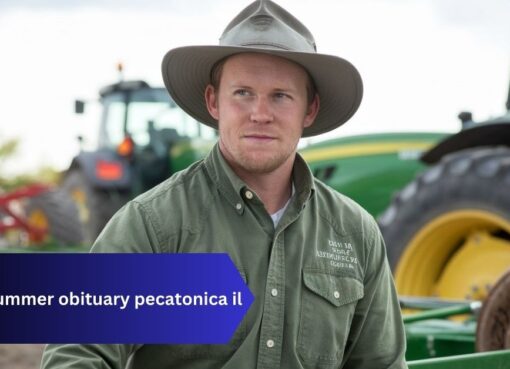The 1982 Movie Poltergeist Used Real Skeletons As – Tymoff – True Horror!

As a lifelong horror fan, discovering that the 1982 movie Poltergeist used real skeletons was shocking! I remember watching the film as a child and feeling a mix of fear and fascination. Learning about this eerie detail added a new layer to my appreciation of the movie and its chilling legacy.
The 1982 movie Poltergeist is famous not only for its chilling story but also for the controversy surrounding its use of real skeletons. This shocking revelation has sparked debates about the ethics of using human remains in films. Understanding this aspect of Poltergeist adds depth to its legacy in the horror genre.
In this article, Stay tuned with us as we explore the eerie world of Poltergeist and reveal the truth behind the use of real skeletons in this iconic 1982 horror film. Get ready for chilling insights and shocking details you won’t want to miss!
Did the 1982 movie Poltergeist really use real skeletons?
Yes, the 1982 movie Poltergeist did use real skeletons in certain scenes, particularly during the infamous swimming pool scene. This revelation came from special effects artist Craig Reardon, who confirmed that real human skeletons were used because they were cheaper and more readily available than plastic replicas at the time. This shocking detail has sparked significant debate about the ethics of using real human remains in film production.
The decision to use real skeletons added a layer of realism to the film, but it also raised serious ethical concerns. Many viewers found the practice disrespectful to the deceased and their families. This controversy has become an integral part of the film’s legacy, often overshadowing its innovative storytelling and special effects.
Why Did The Filmmakers Choose To Use Real Skeletons In Poltergeist?
Cost-Effectiveness:
- Real skeletons were cheaper than high-quality plastic replicas.
- Acquiring skeletons from medical supply companies was a common and budget-friendly practice at the time.
Authenticity:
- The use of real skeletons added a level of realism to the film.
- This choice enhanced the overall chilling atmosphere and horror experience for audiences.
Production Practices:
- The film industry in the 1980s often relied on practical effects for realism.
- Real human skeletons were readily available and provided a more lifelike appearance than plastic models.
Ethical Concerns:
- The decision sparked significant debate about the appropriateness of using human remains in entertainment.
- Many viewers found the practice disrespectful to the deceased and their families.
What scene in Poltergeist featured real skeletons?
The scene in Poltergeist that featured real skeletons is the infamous swimming pool scene. In this climactic moment, the main character, Diane Freeling, is engulfed by the pool’s water, revealing skeletal remains that have risen from the depths.
This chilling and dramatic scene is crucial to the film’s horror elements, and the use of real skeletons added a disturbing level of realism that contributed to the overall impact of the film.
The revelation that real human skeletons were used in this scene has since sparked considerable controversy and discussion about the ethics of using human remains in film production.
How did the public react to the news about real skeletons being used?
The public reaction to the news that real skeletons were used in Poltergeist was one of shock and horror. Here are some key points about the public response:
Outrage and Disbelief:
Many viewers were horrified to learn that real human skeletons were used in the film, feeling it was disrespectful to the deceased and their families. The revelation led to disbelief and outrage among audiences.
Ethical Debates:
The news sparked significant ethical debates regarding the appropriateness of using human remains in entertainment. Critics argued that such practices were exploitative and raised concerns about respect for the dead.
Media Coverage:
The controversy received extensive media coverage, keeping the story alive in public consciousness. Articles, interviews, and documentaries explored the implications of using real skeletons in Poltergeist.
Stigma Associated with the Film:
The revelation contributed to a lasting stigma associated with Poltergeist, overshadowing its success as a classic horror film. While many still appreciate its artistic merits, the controversy has become an integral part of its legacy.
Were there any ethical concerns regarding the use of real skeletons in the film?
Yes, there were significant ethical concerns regarding the use of real skeletons in Poltergeist. Here are some key points regarding these concerns:
- Respect for the Deceased: Many critics argued that using real human remains in a film disrespected the deceased and their families. The idea of portraying human skeletons for entertainment purposes raised questions about the dignity owed to those who had passed away.
- Exploitation of Human Remains: The choice to use real skeletons was seen by some as a form of exploitation. Critics felt that it commodified human remains and reduced the value of life to mere props in a horror film, which many found morally unacceptable.
- Impact on Families: There were concerns about how the use of real skeletons might affect the families of the deceased. For some, the idea that their loved ones’ remains were used in a horror film could evoke feelings of grief and disrespect.
- Industry Standards: The controversy surrounding Poltergeist prompted the film industry to reconsider its practices regarding the use of human remains. This led to the establishment of stricter regulations and ethical guidelines to prioritize respect and dignity in film production.
What Was The Role Of Special Effects Artist Craig Reardon In The Poltergeist Controversy?
Special effects artist Craig Reardon played a key role in the Poltergeist controversy about using real skeletons. He confirmed that real human skeletons were used in the film, especially in the famous pool scene. This revelation shocked many people and sparked debates about the ethics of using human remains in movies. Reardon explained that they chose real skeletons because they were cheaper and easier to get than high-quality plastic ones at the time.
This decision showed the challenges filmmakers faced in the 1980s, focusing on realism and authenticity. However, his confirmation also added to the film’s notoriety, overshadowing its success. In the end, Reardon’s role highlighted the importance of practical effects in horror movies and sparked a major controversy that still affects the film industry and audiences today.
FAQ’s
1. What inspired the creation of Poltergeist?
Poltergeist was inspired by the idea of a haunted house and the classic trope of malevolent spirits invading a family’s home. The film’s producers wanted to explore themes of family, fear, and the supernatural, resulting in a story that resonates with audiences.
2. Who directed Poltergeist, and what was the film’s production style?
Poltergeist was directed by Tobe Hooper, known for his work on The Texas Chain Saw Massacre. The film combined innovative special effects and practical effects, creating a visually striking experience that set new standards in the horror genre.
3. How did Poltergeist influence later horror films?
Poltergeist had a significant impact on the horror genre, paving the way for future films by blending traditional haunted house elements with modern cinematic techniques. Its success led to a surge in supernatural horror films in the years that followed.
4. What notable awards did Poltergeist receive?
Poltergeist received critical acclaim and several nominations for awards, including three Academy Awards for Best Visual Effects, Best Original Score, and Best Sound. The film’s innovative techniques were recognized for pushing the boundaries of horror filmmaking.
5. Are there any sequels to Poltergeist?
Yes, Poltergeist spawned several sequels, including Poltergeist II: The Other Side (1986) and Poltergeist (1988). There was also a remake released in 2015, which aimed to reimagine the original story for a new generation.
Conclusion:
The revelation that real skeletons were used in the 1982 movie Poltergeist has left an indelible mark on its legacy. This chilling decision, driven by practical and financial considerations, has sparked ongoing debates about ethics in filmmaking.
While the film remains a beloved classic in the horror genre, the use of human remains has raised significant moral questions and highlighted the importance of respecting the deceased. As audiences continue to enjoy Poltergeist, it serves as a poignant reminder of the complexities and consequences of artistic choices in the pursuit of realism and authenticity in cinema.
Read more:



Leave a Comment